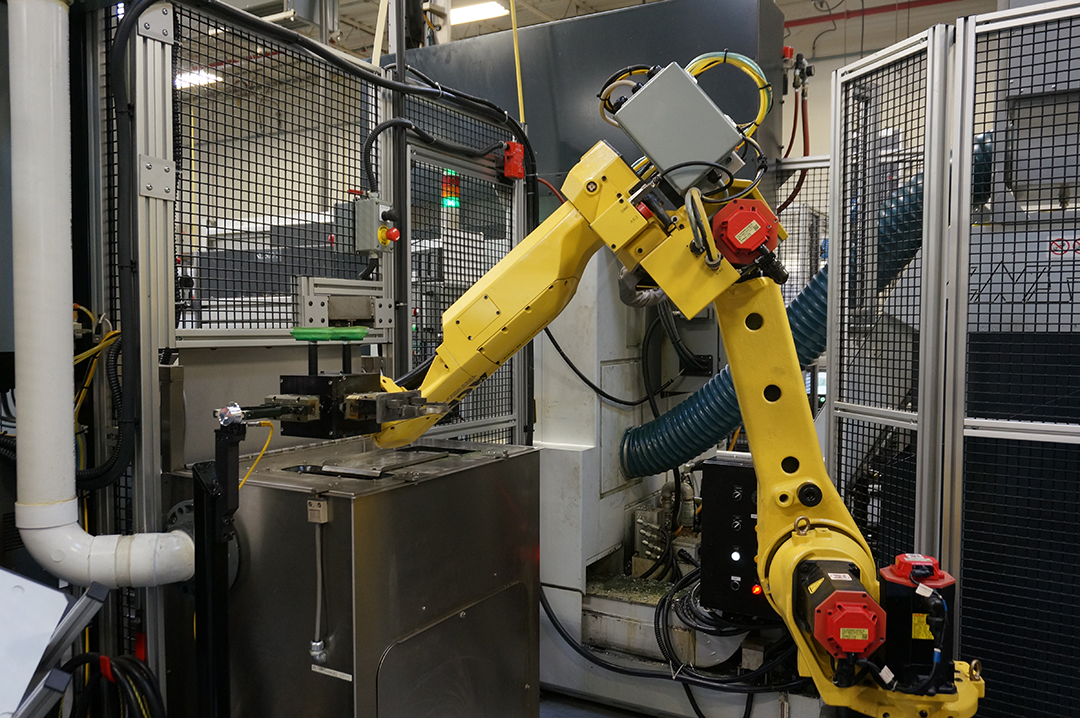Staub is a contract manufacturing and precision machine company in Hamburg, New York, and though we have spent the last few years investing in state-of-the-art equipment and automation, more needed to be done to meet customers’ production needs during the pandemic. Some of our existing customers in the healthcare industry required producing some very important components: parts for ventilators and oxygen concentrators used for COVID-19 patients. And when so many companies were scaling down, we quickly found ourselves scaling up in a BIG way.
These were parts that we were already producing for our Staub customers but on a much smaller scale. As COVID cases rose around the country, the need for ventilators, oxygen concentrators, and oxygen delivery devices grew, and they couldn’t be produced fast enough. Each week we had to deliver thousands of parts all around the country. This situation required some quick investment in a few areas – raw material, equipment, and advanced technology so we could improve and automate, and additional labor. As any manufacturer in 2020 & 2021 knows, this was easier said than done.
As COVID began disrupting our world, we saw normal commodities in scarce supply. (We all remember toilet paper shortages!) Immediately, the Staub management team realized there was a huge risk to our supply chain as we could not predict the availability of metals, tools, or machines. So we decided to take action. A large material warehouse was created and built in our parking lot, ordering aluminum, steel, brass, and other materials by the ton. The last thing we wanted to do was find ourselves without material while customers were pressing us to fill orders that could potentially save lives. This was a significant investment, but we felt it was a necessary risk. That risk paid dividends, and we never had to refuse an order because of material availability.
While many industries and businesses cut jobs and hours because of declining business, Staub was able to keep employees fully engaged. Because we were – what New York State called – an “essential business” producing lifesaving equipment, we were able to add to our staff and take advantage of a frigid job market. The biggest challenge and the top priority was to keep our employees safe during the outbreak.
Because of increased demand for parts, Staub’s stable raw material situation, and our fully engaged workforce, we increased output across all departments during the pandemic. Those successes allowed us to invest back into equipment and infrastructure, focusing on continued automation equipment manufacturing.
Ready to automate your next job?
VIEW OUR EQUIPMENTCustomers requested quantities normally considered impossible, so we had to change how we operated at Staub. Instead of staffing one shift and automating the other two, we put two swing shifts in place. With extremely dedicated employees who volunteered to alter their schedules to ensure 24/7 coverage in the shop, it allowed any issue or gap in production to be addressed in real-time. This allowed us to find the root cause of any stoppages and implement corrective actions to keep them from recurring. But even that was not enough to keep up as business and volume increased.
We found some parts and jobs couldn’t run unattended with their current equipment. A partially successful unattended run was no longer an option; we had to find a way to improve efficiency to gain production time back successfully. So we invested in automation and machinery that would allow us to automate much of that. The addition of slug-loading robots was one efficiency, which takes raw slugs of material and automatically loads them into CNC lathes, then unloads finished parts. We also added automatic inline measurement to ensure that key dimensions on parts did not go out of tolerance during an unattended production run. And that was just the beginning.
Customer demands during the pandemic forced us to squeeze every last drop out of our unattended time and use all available resources to automate. Each small change towards automation over the last two years – whether it be equipment or process – has continued to be modified and scaled up to handle additional capacity. And with each additional change, efficiencies were found. The pandemic business boost propelled the mindset toward automation into action, and it has modified how we think about our operation.
Ready to talk about your next project?
CONTACT US TODAYMuch like the financial crisis back in 2008 and 2009, this pandemic has likely forever changed the manufacturing landscape here at Staub. It has not only made changes in equipment, technology, and process to achieve the automation we needed, but we have made permanent changes in the mindset of management and employees at the company so we will always to be one step ahead in creating efficiencies for our customers and our business.



